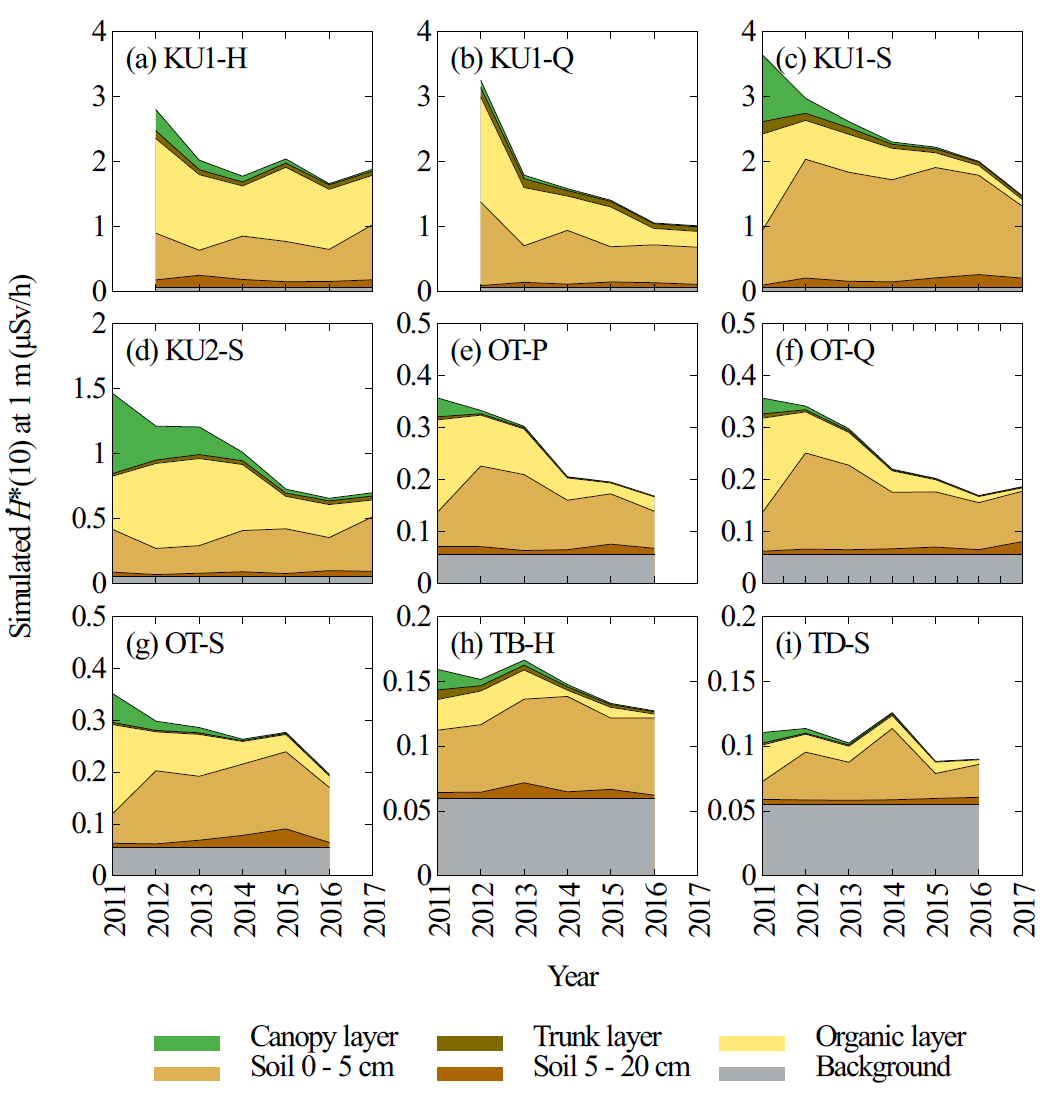Calculations for ambient dose equivalent rates in nine forests in eastern Japan from 134Cs and 137Cs radioactivity measurements
Published:

Abstract
Understanding the relationship between the distribution of radioactive 134Cs and 137Cs in forests and ambient dose equivalent rates (Ḣ*(10)) in the air is important for researching forests in eastern Japan affected by the Fukushima Dai-ichi Nuclear Power Plant (FDNPP) accident. This study used a large number of measurements from forest samples, including 134Cs and 137Cs radioactivity concentrations, densities and moisture contents, to perform Monte Carlo radiation transport simulations for Ḣ*(10) between 2011 and 2017. Calculated Ḣ*(10) at 0.1 and 1 m above the ground had mean residual errors of 19% and 16%, respectively, from measurements taken with handheld NaI(Tl) scintillator survey meters. Setting aside the contributions from natural background radiation, 134Cs and 137Cs in the organic layer and the top 5 cm of forest soil generally made the largest contributions to calculated Ḣ*(10). The contributions from 134Cs and 137Cs in the forest canopy were calculated to be largest in the first two years following the accident. Uncertainties were evaluated in the simulation results due to the measurement uncertainties in the model inputs by assuming Gaussian measurement errors. The mean uncertainty (relative standard deviation) of the simulated Ḣ*(10) at 1 m height was 11%. The main contributors to the total uncertainty in the simulation results were the accuracies to which the 134Cs and 137Cs radioactivities of the organic layer and top 5 cm of soil, and the vertical distribution of 134Cs and 137Cs within the 5 cm soil layers, were known. Radioactive cesium located in the top 5 cm of soil was the main contributor to Ḣ*(10) at 1 m by 2016 or 2017 in the calculation results for all sites. Studies on the 137Cs distribution within forest soil will therefore help explain radiation levels henceforth in forests affected by the FDNPP accident. The merits of this study are that it modelled multiple forests for a long time period, with the important model inputs being informed by field measurements, and it quantified how the measurement uncertainties in these inputs affected the calculation results.
A. Malins, N. Imamura, T. Niizato, J. Takahashi, M. Kim, K. Sakuma, Y. Shinomiya, S. Miura & M. Machida
Journal of Environmental Radioactivity 226, 106456 (2021)
DOI: 10.1016/j.jenvrad.2020.106456
PDF: download
